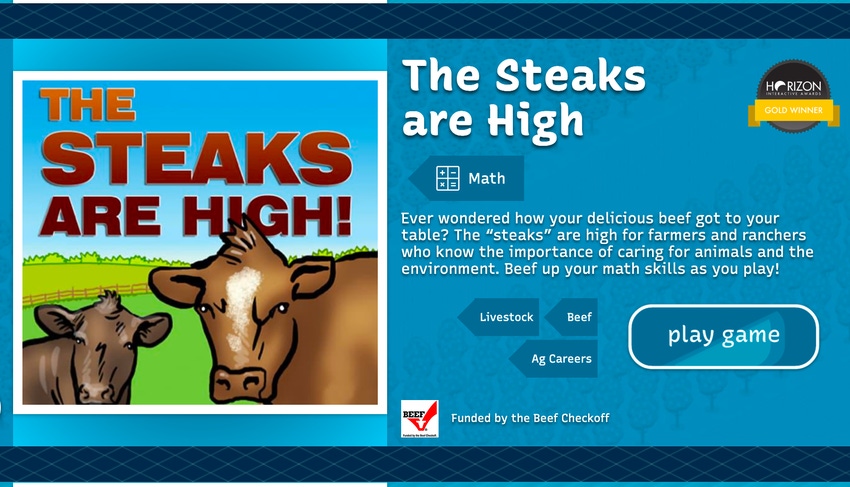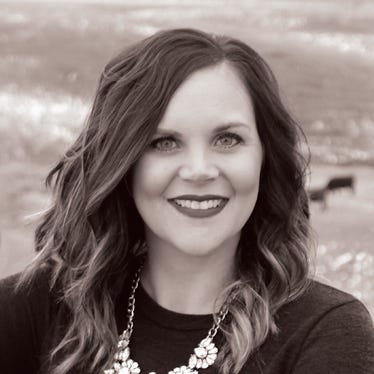Part 2: More ag-accurate tools for teachers & parents
Looking for agriculturally accurate children’s books and lesson plans for all ages? Look no further than this two-part series!
August 21, 2020

School is back in session for many, and parents and teachers may be looking for ways to “beef up” their classrooms with agriculturally accurate resources.
In part two of this series, I add to our growing collection of books and lesson plans.
In case you missed it, part one of the series can be found here.
Check out these 10 recommendations from fellow agriculturalists:
Last week, we learned about the American Farm Bureau Federation’s (AFBF) list of agriculturallyaccurate books. This week, check out the AFBF’s compiled list of virtual games and activities. I’m loving “The Steaks are High” by the Beef Checkoff.
2. “Home on the Rocking R Ranch” by Connie Perez
Join Rusty, Rosie and Raspberry on their ranch adventures! Grab your boots and spurs and don t forget your cowboy hat, as Connie Perez gives young readers a glimpse of ranch life through colorful illustrations and western adventures.
3. “Cattle Kids: A Year on the Western Range” by Cat Urbigkit
Cowboys aren't necessarily boys, and they aren't necessarily grown-ups, either. In this lively photo essay, young readers will meet girls and boys who live a unique way of life on their families' cattle ranches.
Cowgirls and cowboys take part in many aspects of livestock operations, from calving and branding to haying and rounding up the herd. With a colorful and informative text, illustrated with action-packed photographs, Cat Urbigkit's book follows cattle kids through a year of ranching on the western range.
4. “Pumpkin Circle: The Story of a Garden” by George Levenson
This treat of a picture book comes cloaked in the colors of fall. Bouncy verse and glowing photographs show a backyard pumpkin patch move through its natural cycle-a bug's eye and a bird's high view of seeds sprouting, flowers blooming, bees buzzing, pumpkins growing and then going back to earth.
Protect the Harvest has created a list of curriculum and lesson plans that cover topics such as farming, ranching, animal identification and more.
6. Dairy Carrie’s Ag and STEM videos
Dairy producer Carrie Mess has created a video series for middle and high school students covering topics such as nutrient management, beef calf nutrition, social science, ground beef, cattle genetics, the estrus cycle in cattle, plant hybrids, alternative energy, fungi, antimicrobial resistance, dairy farm technology and more.
The Nutrients For Life Foundation has a new curriculum titled, “Nourishing the Planet in the 21st Century,” which is free for high school educators and students. The curriculum provides an interesting approach by reviewing the advantages and disadvantages of controlled slow release fertilizer and stabilized fertilizers.
An enhanced efficiency fertilizer is designed to reduce nutrient losses and improve nutrient-use efficiency by crops while improving crop yields. Slow and controlled release fertilizers are designed to deliver extended, consistent supplies of nutrients to the crop. Stabilized nitrogen fertilizers incorporate nitrification inhibitors and nitrogen stabilizers, which extend the time that nitrogen remains in a form available to plants and reduces losses to the environment.
8. Five Mary’s Farms M5 Ranch School
Five Mary’s Farms has created the M5 Ranch School, which is a community for learning age-old skills, modern day lessons, outdoor living, vocational skills, ranch life and more through engaging, interactive activities.
9. “The Perfect Barn” by Sunshine Shanks
The Perfect Barn is a captivating children's picture book about an owl that searches for a barn that would meet her needs. Barn Owl takes flight to find the perfect barn. On her journey, she discovers various types of barns and the animals that live there: chickens, pigs, dairy cows, and sheep. Will Barn Owl find the perfect barn?
What else would you add to this list? Send me your recommendations to [email protected].
The opinions of Amanda Radke are not necessarily those of beefmagazine.com or Farm Progress.
About the Author(s)
You May Also Like





